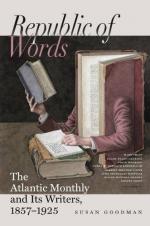A few words of local history and description may illustrate the narrative. Hampton is a town of considerable historic interest. First among civilized men the illustrious adventurer Captain John Smith with his comrades visited its site in 1607, while exploring the mouth of James River to find a home for the first colonists. Here they smoked the calumet of peace with an Indian tribe. To the neighboring promontory, where they found good anchorage and hospitality, they gave the name of Point Comfort, which it still bears. Hampton, though a settlement was commenced there in 1610, did not become a town until 1705. Hostile fleets have twice appeared before it. The first time was in October, 1775, when some tenders sent by Lord Dunmore to destroy it were repulsed by the citizens, aided by the Culpepper riflemen. Then and there was the first battle of the Revolution in Virginia. Again in June, 1813, it was attacked by Admiral Cockburn and General Beckwith, and scenes of pillage followed, dishonorable to the British soldiery. Jackson, in his address to his army just before the Battle of New Orleans, conjured his soldiers to remember Hampton. Until the recent conflagration, it abounded in ancient relics. Among them was St. John’s Church, the main body of which was of imported brick, and built at the beginning of the eighteenth century. The fury of Secession irreverently destroyed this memorial of antiquity and religion, which even a foreign soldiery had spared. One inscription in the graveyard surrounding the church is as early as 1701, and even earlier dates are found on tombstones in the fields a mile distant. The Court-House, a clumsy old structure, in which was the law-office of Colonel Mallory, contained judicial records of a very early colonial period. Some, which I examined, bore date of 1634. Several old houses, with spacious rooms and high ornamented ceilings, gave evidence that at one time they had been occupied by citizens of considerable taste and rank. A friend of mine found among the rubbish of a deserted house an English illustrated edition of “Paradise Lost,” of the date of 1725, and Boyle’s Oxford edition of “The Epistles of Phalaris,” famous in classical controversy, printed in 1718. The proximity of Fortress Monroe, of the fashionable watering-place of Old Point, and of the anchorage of Hampton Roads, has contributed to the interest of the town. To this region came in summer-time public men weary of their cares, army and navy officers on furlough or retired, and the gay daughters of Virginia. In front of the fort, looking seaward, was the summer residence of Floyd; between the fort and the town was that of John Tyler. President Jackson sought refuge from care and solicitation at the Rip Raps, whither he was followed by his devoted friend, Mr. Blair. So at least a contraband informed me, who said he had often seen them both there.




